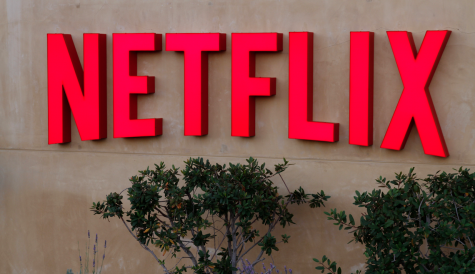Back to the future: NDS and the return of Abe Peled
Cisco this week took a big step towards exiting the service provider video technology business it entered with much fanfare 13 years ago with the acquisition of Scientific Atlanta.

Abe Peled receiving Digital TV Europe’s Euro50 Lifetime Achievement Award in 2013
The tech conglomerate purchased the set-top and cable modem company for US$6.9 billion (€5.8 billion) in 2005, finally selling out to Technicolor for somewhat less – €550 million – in 2015.
Cisco is now completing its effective exit from the pay TV world by divesting NDS Group – the remaining part of its service provider video business. It acquired NDS, subsequently renamed Videoscape, in 2012 for about US$5 billion and is now selling it back to Permira for a reported US$1 billion.
The change of ownership marks the return to the video technology business of former NDS chairman and CEO Abe Peled, who will be chairman of the new company.
What does the sale of these assets – and the price – say about the video technology business, the value of NDS, and Cisco’s strategy?
Taking the latter first, the obvious comparison is with Ericsson, another telecom technology giant that invested big in video technology only to change its mind later as these units took a toll on the company’s bottom line. Ericsson split off its broadcast and media services business under the Red Bee name last year, readying it for a sale, before selling a 51% in the separate media solutions business in January to One Equity Partners.
The impression, whether it is fair or not, is of slow-moving telecom industry behemoths being stung by badly thought-out strategies and rapid changes in technology.
Cisco has in fact demonstrated awareness of the winds of change blowing through the video business, which has seen a well-publicised shift from hardware, broadcast or multicast and set-top box delivery to the cloud, IP unicast and multiscreen.
The company last year set up a specific project to target Mediaroom customers – those telcos that bought into Microsoft’s IPTV platform story, the technology for which was subsequently acquired by Ericsson – in order to bring them over to its Infinite Video Platform, based on the vision of a unicast, adaptive bit-rate enabled multiscreen future.
The problem is that the vision is one thing; the bottom line is quite another. The video business has undergone huge change over the past few years, which has to some extent pulled the rug out from the underpinnings of Cisco and Ericsson’s original decision to invest.
First, pay TV has been buffeted by cord-cutting, at least in the US. Second, while the pay TV business globally is still growing, much of that growth is in emerging markets where there is huge pressure on costs – and alternative suppliers of equipment. Third, in more advanced markets, pay TV growth has been driven by multiplay bundling, which often involves price discounting of the TV element. Accompanying this, pay TV growth in advanced markets has also primarily been led by telecom operators with IPTV services. The latter have increasingly showed willingness to sacrifice an element of control for the low-cost option of Android TV, rather than the heavily engineered bespoke systems that characterised an earlier era of IPTV.
The other big shift is in consumer habits. This has seen a move away from linear TV towards on-demand consumption, a move among younger viewers away from the TV screen to mobile devices, and a move away from buying big, expensive TV packages to no-commitment skinny bundles, OTT TV and service stacking. While this shift is still in its early stages, it is likely to accelerate as the younger cohort’s habits account for a growing proportion of the overall market – and also have an impact on the habits of older age groups.
Where does this leave the re-emergent NDS and Abe Peled? The video technology business of today is very different from that of 2012, and the ground is shifting all the time. Commercially, the landscape is becoming more fragmented as content companies get more involved in direct-to-consumer and – a significant growth area – B2B2C delivery. At the same time, telecoms and TV distribution is becoming more intertwined, with multiple configurations of fixed, mobile and hybrid network infrastructure.
Technologically the industry is coalescing around IP unicast delivery while maintaining, in many cases, a base of legacy broadcast customers.
For the new company, success will depend on continuing to support customers with legacy infrastructure as they migrate their installed base of customers to new platforms, while aggressively pursuing opportunities with new cloud and IP-native disruptors. A difficult trick to pull off in a highly competitive environment, but at least it will have the focus that Cisco lacked.



